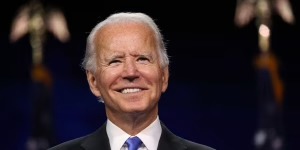Record Fast COVID-19 Vaccine Brings Optimism, But Raises Concerns
December 21, 2020
In January of 2020, China notified the World Health Organization of the COVID-19 outbreak. Less than a year later, the first doses of the COVID-19 vaccine are being prepared and distributed to hospitals and pharmacies across the United States.
The previous record for the development of a vaccine was four years. So, how did the COVID-19 vaccine shatter timelines and become the fastest vaccine to ever be developed? Through worldwide scientific effort propelled by urgency and fatality.
In January, Chinese scientists revealed the virus’s genetic code online, beginning the process. From there, it was all hands on deck, all around the globe.
CRLS biotechnology teacher Dr. Hiroko Kaczmarek thinks the fast development of this vaccine was due to “the global scale of the viral spread and the advancement in vaccine science.” The COVID-19 vaccine was developed using a new, significantly shorter method than previously used. Money also played a role; large donations fueled vaccine development that would have otherwise taken years to fundraise. By the summer, both Pfizer and Moderna, two biotechnology companies, had developed two leading vaccine candidates, but first, both candidates had to pass clinical trials.
Both companies conducted their clinical trials in three phases, including thousands of volunteers of different backgrounds. According to a statement on Moderna’s website from the beginning of Phase 3 trials, “The Company hopes to achieve a shared goal that the participants in the COVE Study are representative of the communities at highest risk for COVID-19 and of our diverse society.” After concluding clinical trials, Pfizer announced a 95% efficacy rate and Moderna announced a 94.5% efficacy rate, well exceeding the rate the Food and Drug Administration (FDA) reported it may authorize for emergency use. On December 11th, the FDA did just that.
States are planning distribution processes prioritizing high-risk populations; the general public is predicted to have access to the vaccine during the spring of 2021. However, there is not yet a vaccine authorized for children under 16, meaning not all CRLS students will be able to be vaccinated for some time. Additionally, the majority of the population must be vaccinated to successfully eliminate COVID-19, but a reported one-third of Americans are reluctant. In response to an Instagram poll asking whether they thought the shortened vaccine development was positive, a majority of CRLS students responded “yes.” Jonathan Akbari ’22 explained,“[A vaccine] would prevent further mass death and give the world a moment to breathe once the threat of transmission goes down.” Other students expressed concerns that the vaccine could have been rushed because of the significant harm COVID-19 has caused to lives and the economy, or that there was political pressure to speed up the process, leading to fear of unsafe vaccines.
These are legitimate concerns, but many scientists ensure that if the FDA approves a vaccine, it will be safe. Anthony Fauci, Director of the National Institute of Allergy and Infectious Diseases, told USA Today, “This board is beholden to no one, not to the administration, not to the company, and not to me.”
Dr. Kaczmarek encourages students to “read the news and reports yourself,” noting that the FDA’s report “will be published.”
After a year of tragedy, the imminent distribution of a vaccine is a welcome sight. We must not let down our guard yet, as there is more to be done, including the production and distribution of enough doses to vaccinate millions of people. Still, a return to normalcy is closer than ever.











